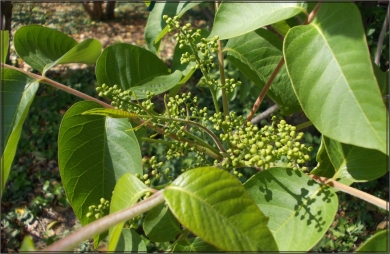| -Kiállítóterem |
| -A keleti lakkról |
| -Magamról |
| -Elérhetőség |
| -Kapcsok |
A keleti lakk, gyakran említett japán nevén az urusi egyike az ember által legrégebben alkalmazott anyagoknak, használatának története évezredekre nyúlik vissza. Ez a különleges és egyedülálló természetes növényi gyanta, melyet a lakkot adó fák, leggyakrabban a lakkszömörce (Rhus verniciflua), a viaszfa (Rhus succedanea), és a burmai lakkfa (Gluta usitata) megcsapolásával nyernek, tulajdonságainak köszönhetően igen alkalmas különféle használati tárgyak, eszközök és edények készítésére.
A keleti
lakk
természetes fenolgyanta. Ez a gyanta sokoldalúan felhasználható
ragasztóanyagként és felületkezelő anyagként egyaránt. Mivel a
megkötött gyanta hőálló és ellenáll minden köznapi oldószernek (víz,
szesz, híg savak stb.) is, ezért a lakk felhasználásával készített
tárgyak meglepően tartósak. Nem véletlen hát, hogy a lakkot adó fák
termőhelyén, a Távolkeleten, Délkelet-Ázsiától Japánig a lakk
felhasználásának igazán szerteágazó hagyománya alakult ki.
Japánig a lakk
felhasználásának igazán szerteágazó hagyománya alakult ki.
Ez a rendkívül gazdag, ma is élő hagyomány nem összegezhető néhány mondatban. Ha többet szeretne megtudni róla, segítenek az alábbi források:
Oriental lacquer, or urushi by its frequently used Japanese name, is one of the first materials put to human use with a history dating back to many millennia. Thanks to its properties, this special and unique natural vegetable resin – which is produced by tapping lacquer sap yielding trees, most frequently the lacquer tree (Rhus verniciflua), the wax tree (Rhus succedanea), and the Burmese lacquer tree (Gluta usitata) – is very well suited for making different utensils, tools and vessels.
Oriental lacquer is a natural phenolic resin. This resin can be used as adhesive and as surface coating material. Because the cured resin is resistant to heath, and withstands all the common solvents (water, alcohol, dilute acids etc.), the goods made with it are surprisingly tough. Hence, it is not by mere coincidence that in the natural habitat of lacquer sap giving trees – in the Far East, from Southeast Asia to Japan – emerged a really diverse tradition of the application and use of lacquer.
It is impossible to sum up this very rich, living tradition in a few sentences. If you like to know more about it, these sources might help:
- A Hopp Ferenc Múzeum gyűjteményei.
- Az Asztalos.hu a keleti lakkról
- Rein, Johannes Justus: Japan nach Reisen und Studien im Auftrage der Königlich Preussischen Regierung
- Weinmayr, Elmar: Nurimono
- Stephan, Karl: Die Asiatische Lacktechnik
- Quin, J. J.: Urushi - The Technology of Japanese Lacquer
- Fraser-Lu, Sylvia: Burmese Lacquerware
- Man Sill Pai: Traditional Korean Furniture
- Chunlathat Phayakharanon: Thai Mother-of-Pearl Inlay
- Bincsik Mónika: Maki-e. DVD kiállítás-ismertető a Hopp Múzeum kiállításához.
- Bushell, Raymond: The Inro Handbook
- Koizumi Kazuko: Traditional Japanese Furniture
- White, Julia M.: Masterpieces of Chinese Lacquer from the Mike Healy Collection
- Duncan, Alastair: Art Deco Furniture
- Szerk. Meyers, Robert A.: Encyclopedia of Analytical Chemistry
- Urushi. Proceedings of the Urushi Study Group. June 10-27, 1985, Tokyo
- Szerk. Williams, Jane L.:The Conservation of Asian Lacquer. Case Studies at the Asian Art Museum of San Francisco
- Webb, Marianne: Lacquer: Technology and Conservation
- Leiria, Leonor: The Art of Lacquering According to The Namban-jin Written Sources
